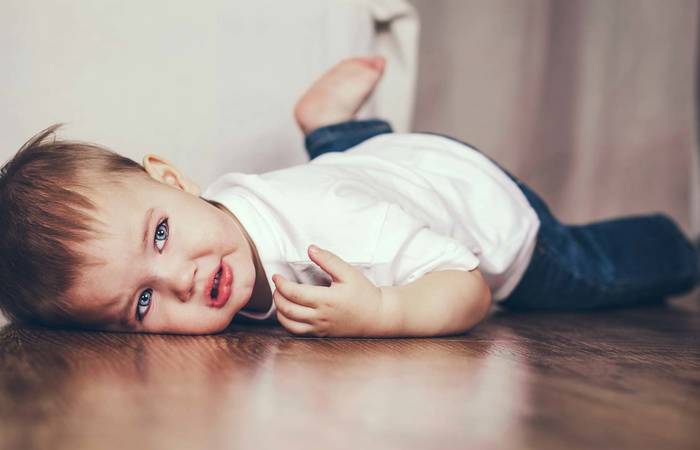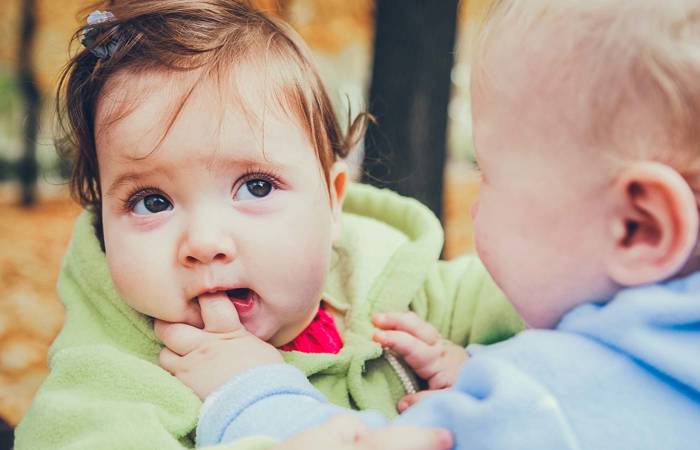Like what you see?
Sign up to receive more free parenting advice.
Thank you for subscribing to our newsletter!
Child Development

Credit: iStock.com/aronAmat
When your toddler is throwing themselves to the floor of the supermarket in a major tantrum and you’re ready for your own personal meltdown, the University of Sydney’s Child Behaviour Research Clinic (CBRC) may hold the answer.
Chief Investigator and Clinic Director Professor Mark Dadds, says parents shouldn’t be embarrassed or feel judged when their child publicly explodes in a spectacular display of anger and frustration.
“There’s nothing worse than when you are in the supermarket with your child and they throw a tantrum and everyone is looking at you, and people even glare at you to do something,” Professor Dadds says.
“Or you’re at school or preschool and a teacher comes up to you and says ‘I need to talk to you about your child’s behaviour’. These things are terribly challenging and they can make you feel awfully stigmatised and alone.
“Many parents struggle with their children’s behaviour. Some kids are hard to parent and there is nothing to be ashamed of. There is nothing wrong with seeking help if you are stuck in the same aggressive cycle. Seeking help is a good thing. It means you are a good parent.”
Professor Dadds says that while all parents experience the challenges associated with their children being ‘oppositional’, it’s the extent of the problems that indicate whether the child’s tantrums or defiance go beyond what you should expect from your average toddler or pre-schooler.
“Most of the behaviours that you see that indicate a child has significant difficulties are present in happy healthy kids. It’s about the extent of those problems,” he says.
“Children steal, swear or don’t follow instructions. It’s when the child is doing it repeatedly and the parent and child are stuck in the same negative pattern of interaction each day and it’s starting to interfere with your life that it’s time to do something.
“Get in early before these behaviours become something big and they become big scary teenagers.
“If you have the occasional spat that’s one thing, but if you find the child gets super anxious and is no longer able to get ready for school or preschool, engage with peers and the family is not coping and getting emotional and angry, and teachers are commenting, it’s time to find an evidence-based treatment facility and do something.”
Many parents struggle with their children’s behaviour. Some kids are hard to parent and there is nothing to be ashamed of. There is nothing wrong with seeking help if you are stuck in the same aggressive cycle. Seeking help is a good thing.Professor Mark Dadds
Stay up to date with the latest news and articles from First Five Years
Thank you for subscribing to our newsletter!
Parents urged to seek help early
Professor Dadds says the kind of behavioural and emotional problems that parents often struggle with start to emerge in toddlers.
“Around the toddler period of 18 months to 3 years, that’s when parents first go ‘My goodness me that is hard and I’m struggling here’.
“The child is most flexible at that point. The sweet spot for getting substantial change is the preschool years which is really, really important.
“The majority of our families are parents with children in the 4 to 8-year-old category. They have struggled through the toddler years and now the child is going into daycare, preschool or school and they are starting to realise people are seeing the child needs help.”
Clinically significant change in about 60% of children
Professor Dadds says the CBRC program runs for 10 weeks offering assistance to families of children aged 2 to 16. The weekly one-hour sessions begin with an assessment of the child and parent/s which is presented back to create a shared model for change.
“It’s critical that parents and practitioners are working together as a team,” Professor Dadds says.
The first component of the program is showing parents powerful techniques for engaging with the child positively and how to use that to encourage a repertoire of positive child behaviour. This is followed by positive discipline and working with the child on emotions. The final step is looking at what else is occurring in the family to more broadly understand how parents are coping and what may be impacting the family.
“We get clinically significant change in about 60% of children within that 10 weeks,” Professor Dadds says.
“These treatments are one of the great achievements of the psychological sciences.
“In Australia still less than 20% of children who need these program get them. In a lot of places the treatments don’t exist, like in the bush. In other cases, parents don’t know what to do. They feel embarrassed. Mental health literacy in Australia isn’t where it should be.
“I saw an article about a woman saying her five-year-old son had been expelled from preschool. This child had terrible problems, but treatable with a program like ours.
“At the end she said she couldn’t wait for him to get to school so that he could see the guidance counsellor. That’s not an evidence-based treatment for this problem. There’s just a great deal of misunderstanding.”
Greater need for child mental health literacy
Professor Dadds says the CBRC aims to reduce the stigma of child mental health issues and raise public discussion.
“Have you noticed that in Australia we have been so fabulous with mental health literacy? How people are educated about mental health issues? We’ve made a great effort around depression and anxiety through groups like Beyond Blue so that we now know of celebrities and sports stars who’ve acknowledged and addressed these problems.
“But the attention to child mental health literacy is absent. We are pushing hard, but if you asked the average punter about oppositional defiance disorder, ADHD or conduct disorder, they wouldn’t have the same level of knowledge or understanding. This country needs to have a big push in child mental health literacy.”
Calm and predictable discipline strategies
Professor Dadds says the Child Behaviour Research Clinic helps parents develop positive engagement with their children in situations where children are ruling their families with tantrums.
“Parents needs to have a calm and predictable discipline strategy so that the child learns to regulate themselves rather than throw tantrums.
“One of the things we see most commonly is when the child gets difficult and emotional, the parent gets emotional as well.
“They don’t know what to do and they’re sick of it so they start to raise their voice and get emotional and it makes the child worse and worse.
“We help the parent know what to do so they can stay calm themselves rather than get caught in the emotional battle.
“When the child starts having behaviour problems the amount of time you spend in the positive goes down and down. The first suggestion is to spend special time being child-centred and reward the child with praise, hugs and more of your time for all their positive behaviour.
“Secondly, to help the child you need to have an effective discipline strategy. If you have a child ruling the family with tantrums it’s not a good thing. Parents need to set up a calm and predictable discipline strategy so that the child learns to regulate rather than throw tantrums.”
Online support through ParentWorks
In addition to the 10-week face-to-face program, the Child Behaviour Research Clinic offers ParentWorks, an online set of 5 to 8 modules for parents offering strategies to improve parenting skills, confidence and child behaviour. Each module takes about 30 minutes, and has videos with practical information and activities.
Parents and caregivers may find this program helpful for managing challenging child behaviours such as tantrums, aggression, noncompliance, inattentive or hyperactive behaviour, sibling conflict, getting ready for school and bed, and behaviours outside the home.
For further information about the Child Behaviour Research Clinic contact 02 9114 4326 or SCBRC@sydney.edu.au.
Top 3 parenting tips by Professor Mark Dadds
- If there’s two or more parents working as a team, don’t battle each other over what should happen with the child.
- Catch the child being good. Walk around the house and check if they are playing quietly and independently. Are they following instructions? Are they playing nicely? Are they speaking in a nice voice? Catch the child doing those things. When you catch them, spend time with them and give them a treat, praise them, and give them affection.
- When the child misbehaves stay calm. Don’t get emotional. Give a quick instruction for what they should not do and what they should. ‘Please don’t hit you sister. I’d like you to play quietly.’ If the problem continues, repeat the instruction. If the problem stops go back and catch them being good. If the problem escalates use a calm predictable outcome like loss of privileges.







